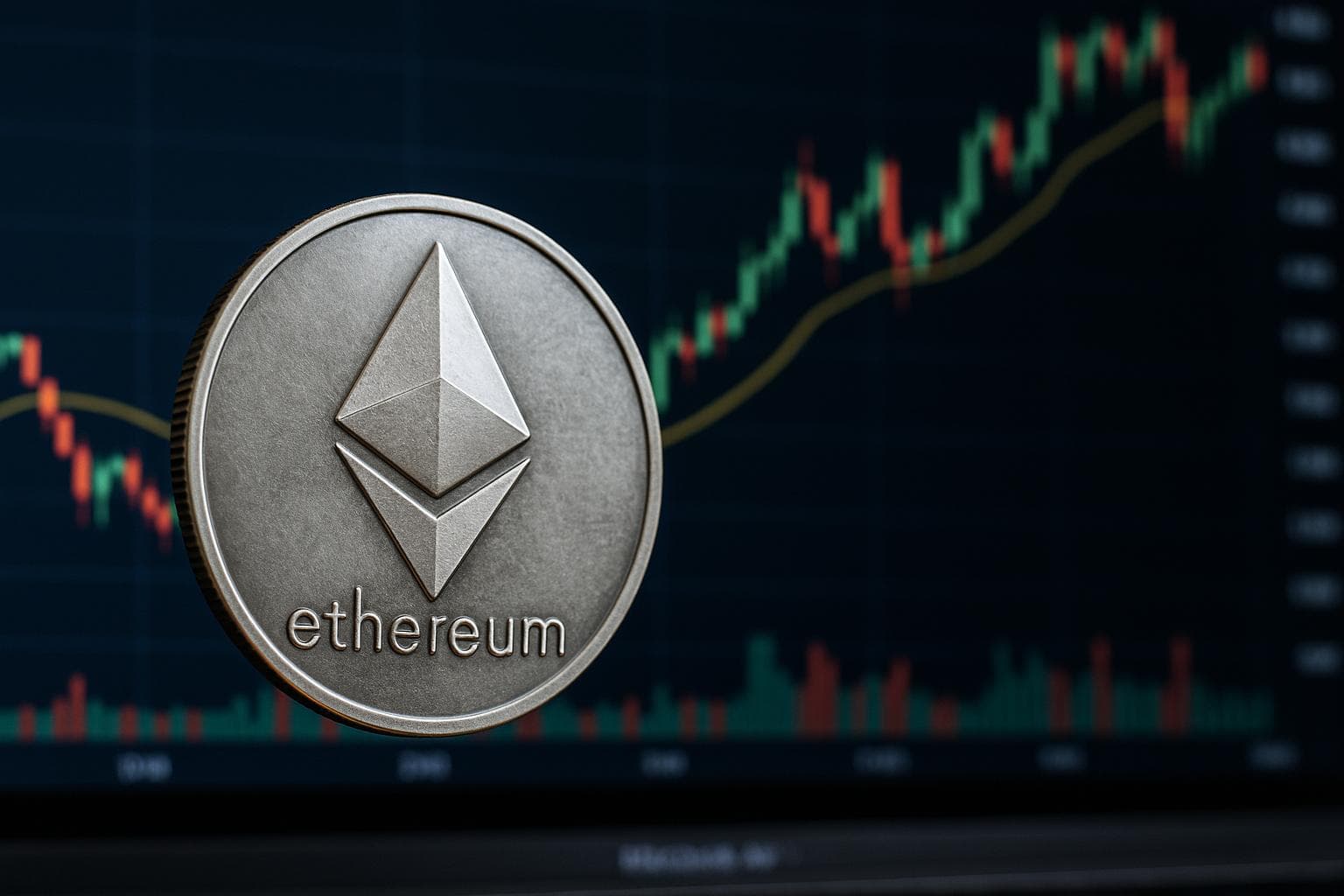The Market’s Favorite Momentum Coin Is Coiling Again
Ethereum has spent the week doing something it hasn’t done in months — staying quiet.
After eight straight days of spot ETF inflows and a steady grind above $4,300, the world’s second-largest cryptocurrency is now sitting at a critical crossroads. ETF demand has paused, derivatives traders are loading up on volatility, and market watchers say the next decisive move could shape the rest of October.
For now, Ethereum trades near $4,350, caught between strong support around $4,100–$4,150 and firm resistance just under $4,700. It’s a range traders know well — and one that rarely holds for long.
“This kind of compression never lasts,” said one options strategist at a Singapore crypto fund. “When you get quiet markets with ETF outflows turning flat, the next move is usually explosive — one way or the other.”
The ETF Engine Stalls — But Doesn’t Die
The recent slowdown comes after Ethereum ETFs logged over $1.4 billion in inflows across eight sessions — part of a record-breaking $5.9 billion week for crypto funds globally. That streak ended Thursday, when for the first time since late September, net flows turned slightly negative.
It wasn’t enough to trigger panic — but it did shift sentiment. Traders who had been aggressively buying dips throughout the month are suddenly hesitating.
“It’s not bearish,” said a digital asset researcher based in London. “It’s more like the market is catching its breath. Institutions are still buying, but the pace isn’t relentless anymore.”
The short-term result: a sideways lull that’s thinning out liquidity and frustrating momentum traders who thrive on trend continuation.
A Range Defined by Patience and Precision
On charts, Ethereum’s setup looks deceptively simple.
Support remains anchored near $4,100, where ETF-driven bids consistently appear. Resistance sits around $4,650–$4,700, where profit-taking has capped each rally.
For directional traders, the 4,700 level is everything. A clean breakout and 4-hour close above it could open the path toward $5,000, where resting orders are stacked across exchanges. Conversely, a breakdown below $4,050 could flush leveraged longs and reset positioning closer to $3,900.
The current range isn’t just technical — it’s psychological. Ethereum has outperformed most altcoins this quarter, but it’s still playing catch-up to Bitcoin’s ETF-fueled dominance. The question now is whether ETH can lead its own move — or if it must wait for Bitcoin to make the first swing.
Derivatives Flash a Warning
Options traders are already betting that this calm won’t last.
Short-dated implied volatility has spiked over 10 points in a week, while risk-reversals — which measure bias toward calls versus puts — have flattened. That means traders expect big movement, but they’re unsure of the direction.
Funding rates on perpetual futures have normalized around neutral, signaling no strong bias between longs and shorts. Open interest, however, has crept higher — a classic sign that positioning is building before a volatility event.
“It’s coiling,” said a trader at an Amsterdam market-making firm. “You can feel it. The ETF pause gave traders a reason to hedge, but not to panic. Everyone’s waiting for confirmation.”
On-Chain Activity: Quietly Constructive
Beyond charts and derivatives, Ethereum’s on-chain health remains robust.
Active addresses and transaction volumes on Layer-2 networks — particularly Base and Arbitrum — continue to climb, offsetting lower activity on the mainnet. That’s helped maintain network revenue stability even as gas fees normalize.
The story here is maturity. Ethereum is no longer just a speculative asset — it’s an economic ecosystem. And that makes it both more resilient and more predictable in periods of macro uncertainty.
Still, the market’s short attention span means patience is thin. With Bitcoin setting the pace, Ethereum traders are watching for any sign that its relative underperformance could reverse.
The Macro and ETF Connection
The next big test could arrive early next week, when new ETF flow data and the U.S. CPI report hit simultaneously.
If inflation data softens, risk assets — including crypto — could benefit from renewed macro tailwinds. If it surprises higher, a stronger dollar could sap momentum from both Bitcoin and Ethereum, reinforcing the current consolidation.
ETF issuers are also facing a test of endurance. After weeks of non-stop inflows, the first small outflow has triggered questions about sustainability. Yet even with the pause, Ethereum ETFs remain net positive for October — a sign that institutional demand hasn’t disappeared, it’s just pacing itself.
Trading the “Coil”
For short-term traders, this setup demands discipline.
- Bullish scenario: A confirmed breakout above $4,700 with ETF inflows resuming could send ETH toward $5,000–$5,050 within days.
- Bearish scenario: A close below $4,050 opens a window toward $3,900, where large spot bids and prior liquidity zones align.
- Volatility trades: With options volatility rising but not extreme, buying premium (straddles, call spreads) may offer asymmetric reward if the move expands next week.
The common thread: whichever direction it chooses, the next move will likely be fast, sharp, and headline-driven.
The Bigger Picture: Ethereum’s Maturing Market
For all the noise, Ethereum’s long-term trajectory looks steadier than ever. Institutional adoption through ETFs, growing Layer-2 scaling, and consistent on-chain activity are forming a base of credibility few assets can match.
But markets rarely reward comfort. Every calm stretch — every quiet coil like this one — ends with a new narrative.
The question for traders is simple: will the next one be another leg higher… or the first real correction since the ETF era began?
Either way, the setup is the same — pressure is building, and patience is running out.


Comments